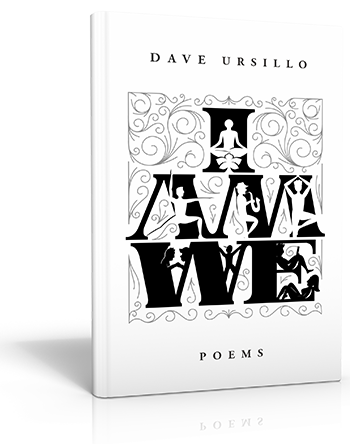The prices of things are strange, when you think about it. A plane ticket to India from Boston may run you $1,000, but a STAR WARS LEGO set could have cost just as much last holiday season.
Then there are things like booze and books. In the East Village, my old neighborhood in New York City, a craft beer or martini could set you back between $8 and $15. And you pee that out. If you’re lucky, you won’t have a headache the next day.
A book? A book usually costs the same.
It can take the author years to write and publish. If it’s a good read, that book’s value could conceivably last you a lifetime. And, it’s hangover free (at least, it ought to be).
When you place them side by side, the price of things really starts to seem quite strange. Of course, there are plenty of factors that affect the price of things. Cost of production, market value, supply and demand, and so on.
But after my first visit to a developing nation last November, the price of things has lingered on my mind.
I’ve been deeply contemplating the price of things ever since that visit to India, and questioning how I value my dollars and cents–as well as how I price things as an entrepreneur, an artist, and an author.
That brings us to today. I’ve been celebrating the release of a new book this month, I Am We, which is a collection of poems that I’m really proud of. I Am We is certainly my best work to date, and I’ve been grateful to receive feedback from readers expressing their early love of these emotional little morsels called poems.
And if you pop over to Amazon.com where all of my books are listed in paperback and digital form, you’ll discover that all my books are now priced to be as affordable as possible.
I’ve lowered the prices of all of my paperbacks between $8 and $12 (affected by how much the book actually costs to print), and all the Kindle editions of my books have dropped to $2.99 or less.
My brand new book, I Am We, is an affordable $10 in paperback and $2.99 in Kindle/digital format.
As an author and an artist, I’ve spent years quietly debating the price of my work. Everyone does.
You can literally spin yourself dizzy between the typical arguments you hear from both sides of the pricing debate.
One side says price your work up, because people will perceive it as valuable if it’s priced more expensively.
(At least, that’s the theory. They’ll point to arguments like a guy in New York City selling street garbage for hundreds of dollars, and people buy it, because its price point reflects a perceived value of unique art.)
Then there’s the case to be made that, if you can price your work as affordably as possible, then more people can conceivably experience it.
(In this case, you don’t want a dollar amount to prevent someone from experiencing your work, especially if it’s something that could really help them.)
But then, if something’s so cheap that it’s free, people might not give it a single look. If there’s no dollar value assigned to it, then why would anyone value it at all?
(Think of the free ebooks, guides or programs you downloaded onto your hard drive with the intention to open some day, and still haven’t.)
I’ve had long discussions on the value of quality services that self-employed entrepreneurs and creative self-starters provide to others (because I help them get paid to do that work), and how the pricing of those affects not only the clients you receive but indeed the quality of work that the service provider puts out.
I believe there’s a sweet spot to be found.
That the value of your work appreciates over time as you get better and better at it–becoming all the more highly skilled at doing what you do best for people.
But with art?
The same principles apply, but art serves a broader purpose. Social purpose. Cultural purpose. Spiritual purpose, even.
Artists are entrepreneurs and, as professionals with a developing skillset, artists need to understand that their artistic skills and abilities will appreciate over time with enough practice–that will appreciate the value of their artistry, hands down.
But art itself, to me, is not just a “service” provided to customers in a market exchange of values.
Artistry brings people together. It shares ideas, and sparks conversation. As I like to say, books allow our souls to meet without ever having spoken. Can you really assign a dollar value to that?
Well, sure, you could, but for artists the value of the interaction occurring may be in fact more miraculous and soulfully rewarding than the difference between a $5 or $15 royalty share.
Every artist and creative needs to answer this for oneself: what’s the value of your artistry, to you?
As an artist who works with words and books, I know the answer for me.
I want the words I share to be experienced as widely as possible by the people who I’ve written them for.
And a few dollars’ difference for the price of a book probably isn’t such a big deal anyways.
For me, at least.
For others? It might be a bigger deal than I give it credit for.
In India, I spent time at a little book store that neighbored a German cafe about a mile’s walk from my hotel.
The store’s front windows were lined with books from top to bottom, left to right. No light could get in. The sun entirely bleached the wall of books pale blue-white, almost to the point where you couldn’t make the names of the books out.
Inside were an amazing array of books on yoga, ayurveda, cooking and nutrition, Hindu mysticism, modern-day philosophy, tantric sex, epic novels and much more. What was so lovely about this book store was the price of the books. Most were priced from 150 rupees (about $2.40 USD) to 500 rupees ($8 USD).
And you know what I did there?
I bought a bunch of books.
Books I might have otherwise not purchased at all, or whose stories I might never have experienced, or whose authors I might never have learned from.
I want my books to be like that.
Thumbed through. Scooped up. Guiltlessly. Indulgently.
Thrown in a backpack, and hoofed across the earth.
This is my art form, yes. But I don’t want my art hanging on a wall (should I ever be so flattered).
These words are guides for living, not for being looked at.

P.S. – When you pick up my latest “guide for living,” I Am We, which features 68 poems, at Amazon.com today, be sure to download all of my other books for free — it’s a promotion I’m doing this week for Kindle digital editions. Enjoy!
 I Am We: Poems
I Am We: Poems
Five-Star Debut on Amazon
Enjoy this colorful collection of poems for just a few dollars.
KINDLE – $2.99 PAPERBACK – $10
The Kindle Reader App is free and can be used on iPhone, iPad, Desktop and Android Devices.
